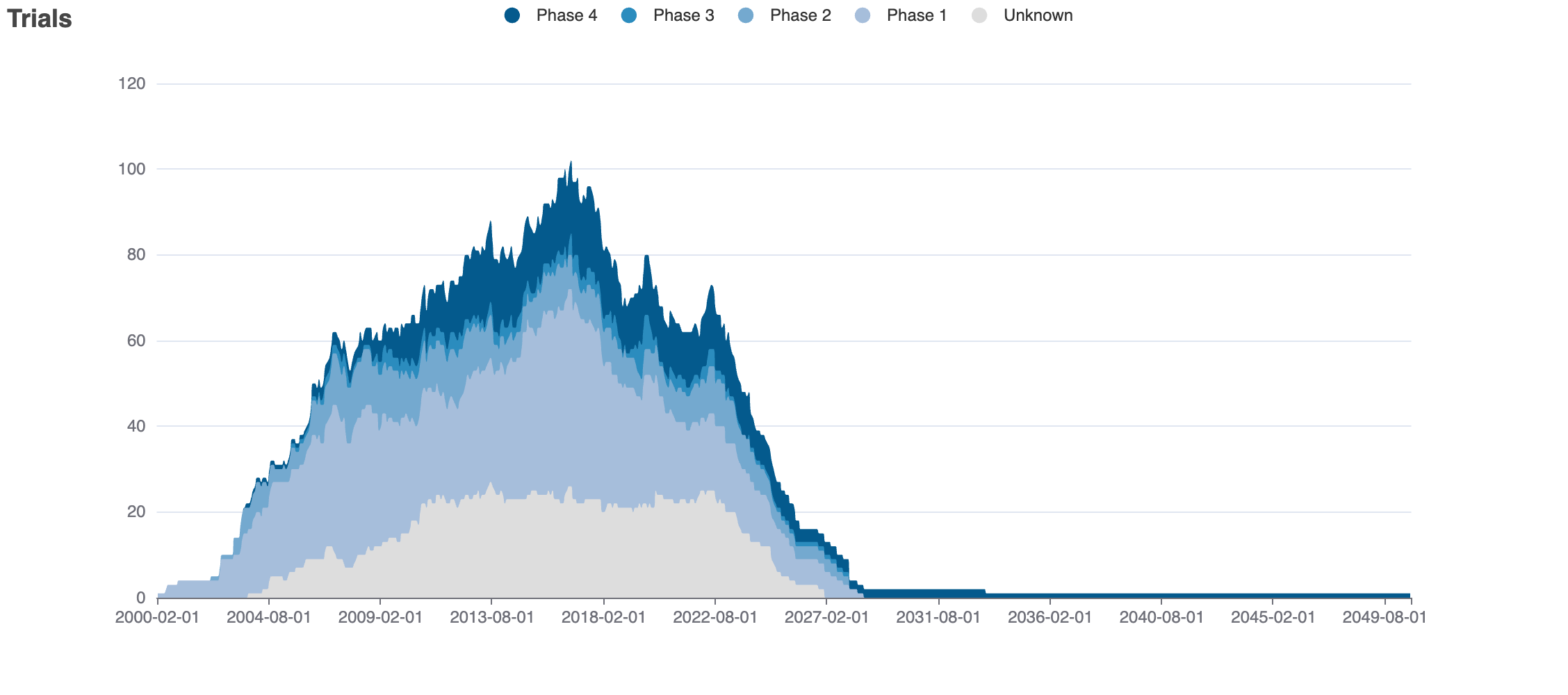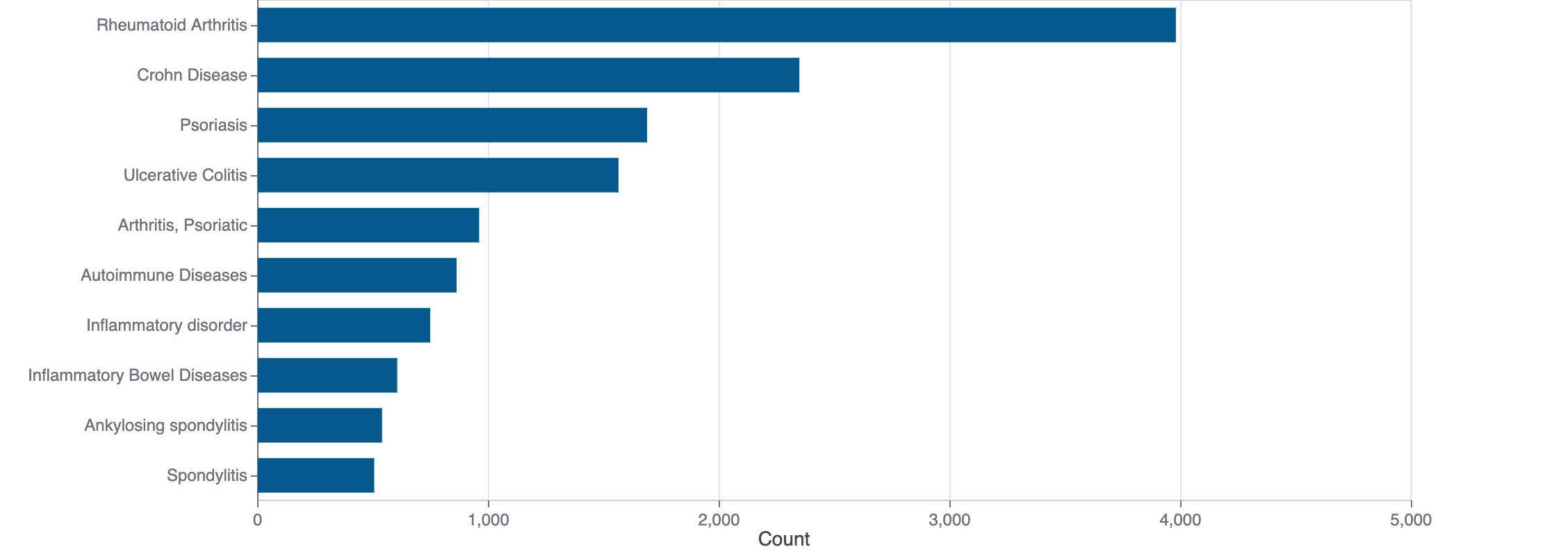Prinomastat
Prinomastat is a small molecule pharmaceutical. It is currently being investigated in clinical studies. It is known to target collagenase 3.
Download report
Favorite
Events Timeline
Commercial
Clinical
Drug
Target
Variants
Financial
Trends
Safety
Events Timeline
5D
1M
3M
6M
YTD
1Y
2Y
5Y
Max
Events
FDA approval date
EMA approval date
Patent expiration date
Study first post date
Last update post date
Start date
Primary completion date
Completion date
Results first post date

Mock data
Subscribe for the real data
Subscribe for the real data
Commercial
No data
Clinical
Clinical Trials
3 clinical trials
View more details

Mock data
Subscribe for the real data
Subscribe for the real data
Indications Phases 4
No data
Indications Phases 3
Indication | MeSH | Ontology | ICD-10 | Ph 1 | Ph 2 | Ph 3 | Ph 4 | Other | Total |
|---|---|---|---|---|---|---|---|---|---|
| Prostatic neoplasms | D011471 | — | C61 | — | — | 1 | — | — | 1 |
| Non-small-cell lung carcinoma | D002289 | — | — | — | — | 1 | — | — | 1 |
| Lung neoplasms | D008175 | — | C34.90 | — | — | 1 | — | — | 1 |
Indications Phases 2
Indication | MeSH | Ontology | ICD-10 | Ph 1 | Ph 2 | Ph 3 | Ph 4 | Other | Total |
|---|---|---|---|---|---|---|---|---|---|
| Glioblastoma | D005909 | EFO_0000515 | — | — | 1 | — | — | — | 1 |
| Central nervous system neoplasms | D016543 | — | — | — | 1 | — | — | — | 1 |
| Nervous system neoplasms | D009423 | — | — | — | 1 | — | — | — | 1 |
Indications Phases 1
No data
Indications Without Phase
No data
Epidemiology
Epidemiological information for investigational and approved indications
View more details
Drug
General
| Drug common name | Prinomastat |
| INN | prinomastat |
| Description | Prinomastat is a hydroxamic acid that is (3S)-N-hydroxy-2,2-dimethylthiomorpholine-3-carboxamide in which the hydrogen attached to the thiomorpholine nitrogen has been replaced by a [4-(pyridin-4-yloxy)phenyl]sulfonyl group. It is a selective inhibitor with of matrix metalloproteinases (MMPs) 2, 3, 9, 13, and 14. It has a role as an antineoplastic agent, a matrix metalloproteinase inhibitor and an EC 3.4.24.35 (gelatinase B) inhibitor. It is a hydroxamic acid, a member of thiomorpholines, a sulfonamide, an aromatic ether and a member of pyridines. It is a conjugate base of a prinomastat(1+). |
| Classification | Small molecule |
| Drug class | enzyme inhibitors: matrix metalloprotease inhibitors |
| Image (chem structure or protein) |  |
| Structure (InChI/SMILES or Protein Sequence) | CC1(C)SCCN(S(=O)(=O)c2ccc(Oc3ccncc3)cc2)[C@H]1C(=O)NO |
Identifiers
| PDB | — |
| CAS-ID | 192329-42-3 |
| RxCUI | — |
| ChEMBL ID | CHEMBL75094 |
| ChEBI ID | — |
| PubChem CID | 466151 |
| DrugBank | DB05100 |
| UNII ID | 10T6626FRK (ChemIDplus, GSRS) |
Target
Variants
No data
Financial
No data
Trends
PubMed Central
Top Terms for Disease or Syndrome:

Mock data
Subscribe for the real data
Subscribe for the real data
Additional graphs summarizing 520 documents
View more details
Safety
Black-box Warning
No Black-box warning
Adverse Events
0 adverse events reported
© 2020-2025 Collaborative Drug Discovery Inc. (CDD) | Terms of Use